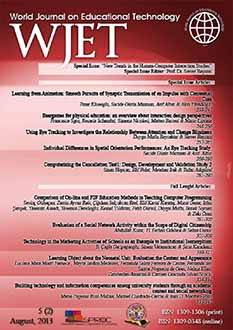Building technology and information competences among university students through an academic contest and social networking
Building technology and information competences among university students through an academic contest and social networking
Author(s): Maria-Eugenia Ruiz-Molina, Manuel Cuadrado-García, Juan D. Montoro-PonsSubject(s): Education
Published by: Birlesik Dunya Yenilik Arastirma ve Yayincilik Merkezi
Keywords: Technology and information literacy; social networking; academic contest;
Summary/Abstract: Spanish universities have recently adapted their studies to the requirements of the European Higher Education Area (EHEA). As part of these requirements, the development of computer and informational skills must be considered as an academic objective. Amongst other activities geared towards developing these skills, an informational video was disseminated. The design of the communication campaign promoting this video, developed through viral marketing and social networking sites,was the result of empirical research carried out by students of the University of Valencia. This paper describes the research objectives, questions, techniques and main findings of the study. A survey was conducted on a sample of 844 valid questionnaires completed by students after watching the video, following a non-probability procedure of quota sampling(gender and type of studies) and convenience sampling in order to achieve a representative sample of the total population.After processing data through descriptive analysis techniques, we were given a fairly detailed picture of the most commonly used electronic devices, social networking sites and activities developed by students using Web 2.0. In particular, personal computers were the most commonly used electronic devices for access to the Internet. Regarding the most commonly used social networking services, Tuenti and Facebook are the most popular websites among students, the majority of whom use social networks several times a day for chatting and sending messages. Concerning the students’ opinions about the video,most of them liked the video and its individual elements (music, images, story, etc.). They also find the message easy to understand. However, differences observed across gender and type of studies suggest the need to include several social networks as well as video features in order to effectively reach these different groups of students. This information enables the design of a communication plan to effectively make students aware of the existence of the informational video about technology and information competences and to watch it with full attention.
Journal: World Journal on Educational Technology: Current Issues
- Issue Year: 5/2013
- Issue No: 2
- Page Range: 335-347
- Page Count: 13
- Language: English

